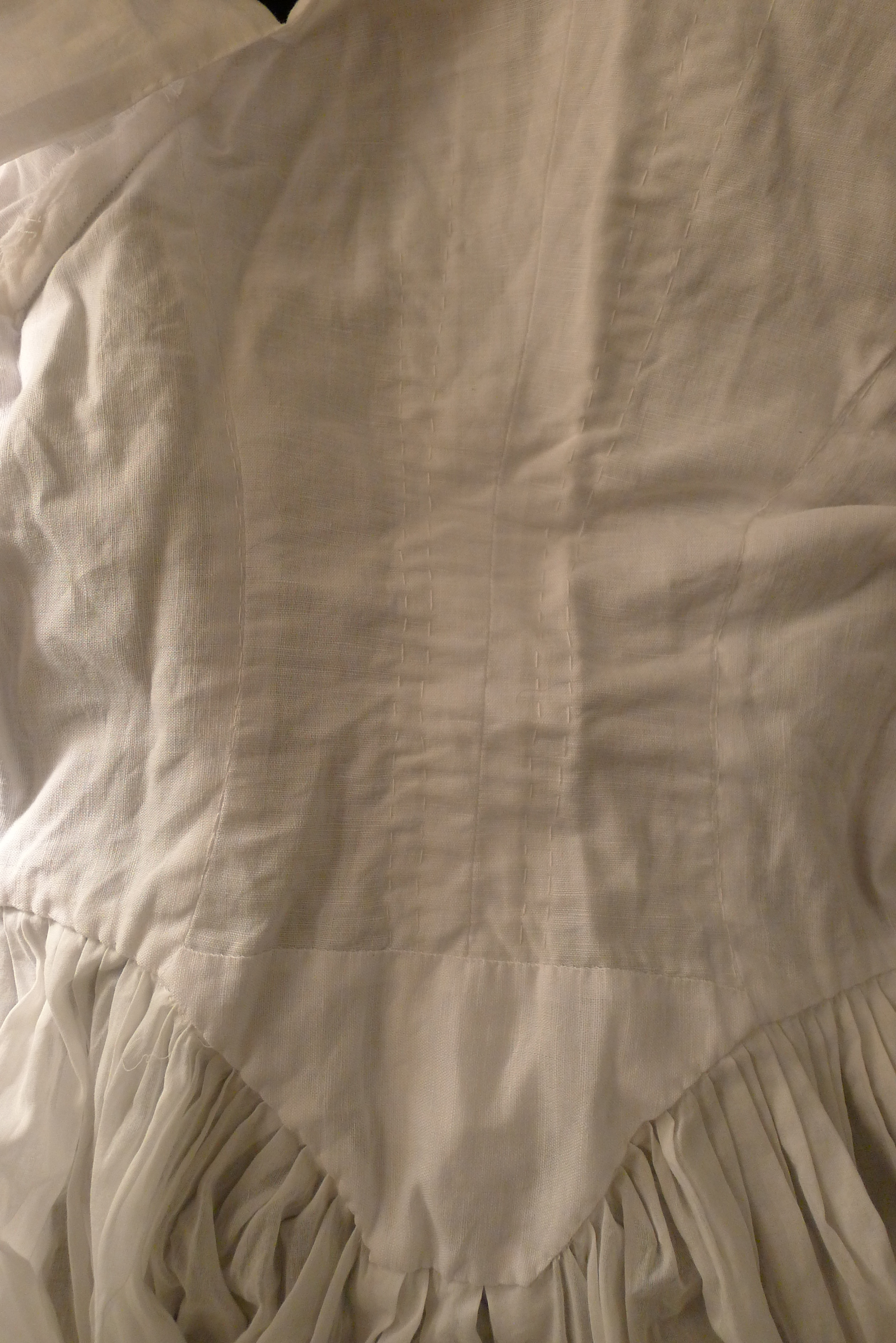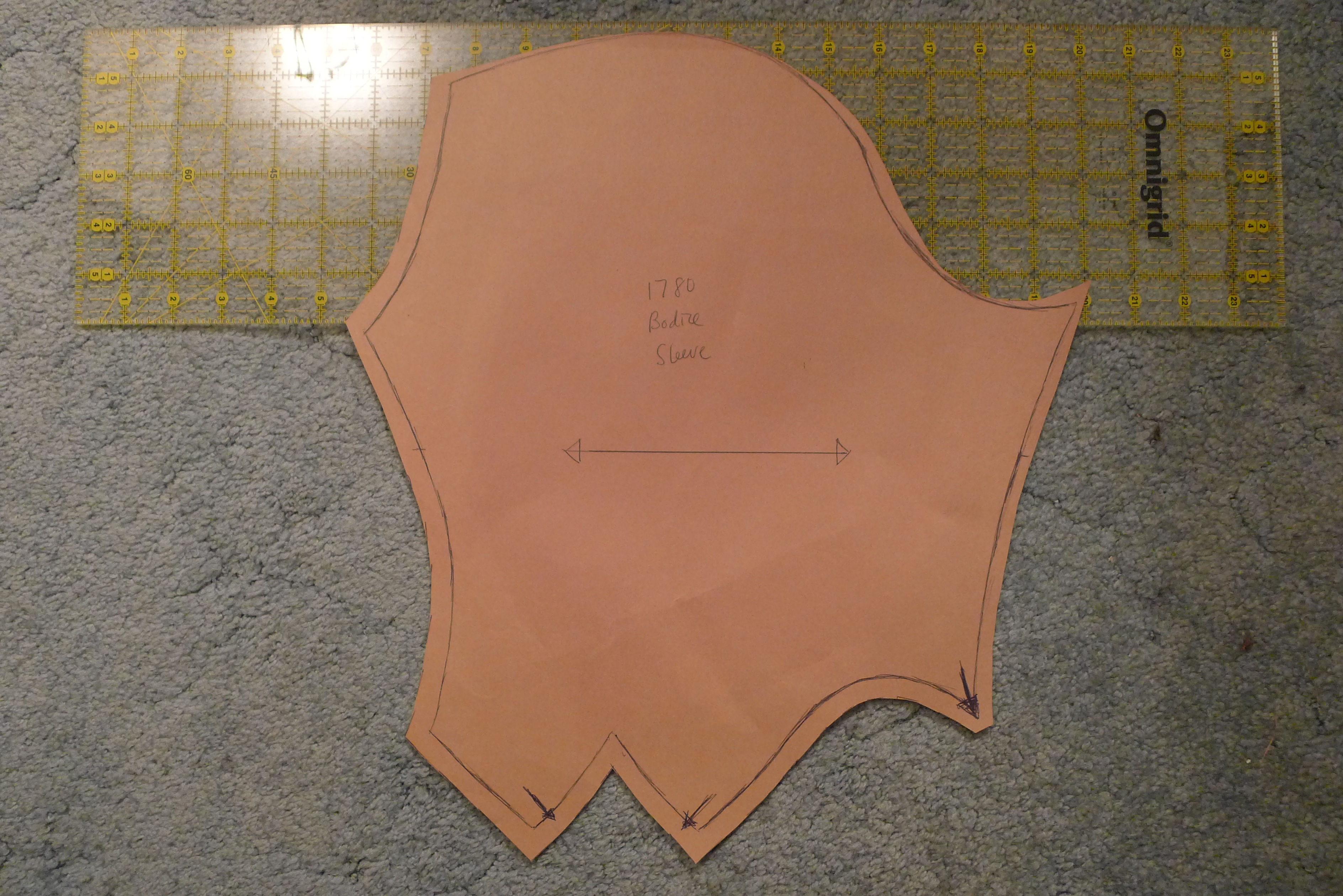An oldie, but a goodie
Sep. 16th, 2019 04:08 pmI never really posted much about the white voile round gown that I made last year. I ended up really liking it. I decided to make it as an English gown, with the pleats on the back extending into the skirts (en fourreau is the term most costumers use). It looks good, but I accidentally made a mistake with it and had the pleats sewn down to the bottom of the lining, which meant that I couldn't turn the lining edge in at the bottom to sandwich in the top of the skirts. So I ended up adding a piece to the lining at the bottom of the CB to fix it and it's very unobtrusive. Problem solved! And I took a couple quick pictures of the back pleats yesterday night because I happened to have a little bit of time on my hands, outside and inside.


It's too bad I don't have more occasions to wear it. It's such a great dress for summer and 18th century pastoral-ness.
The real reason I was taking pictures was because I realized I didn't end up taking any of my final bodice pattern, even though I took pictures of the fitting process. I find it's always helpful to see what other people's pattern shapes look like and how they work. (A reminder that this was originally diagram XXII from 1775-1780 in Cut of Women's Clothes by Norah Waugh.) So here are some pics with my quilting ruler for scale. The first has all the bodice pieces, including a 1-piece back and a 2-piece back. (I used the 1-piece for this gown and the 2-piece for my yellow gown). I'm actually planning to make a couple more small adjustments to the angle around the back shoulder and to the strap to get a more accurate look for c.1780. The second pic is of the sleeve, but the 3 small pleats at the top of the sleevehead aren't marked. All arrows are places where things need to be extended a bit. If it needed to be smaller, I just cut into the paper pattern itself, which is why the lines are a bit wonky compared to the actual outline of the pattern pieces.




It's too bad I don't have more occasions to wear it. It's such a great dress for summer and 18th century pastoral-ness.
The real reason I was taking pictures was because I realized I didn't end up taking any of my final bodice pattern, even though I took pictures of the fitting process. I find it's always helpful to see what other people's pattern shapes look like and how they work. (A reminder that this was originally diagram XXII from 1775-1780 in Cut of Women's Clothes by Norah Waugh.) So here are some pics with my quilting ruler for scale. The first has all the bodice pieces, including a 1-piece back and a 2-piece back. (I used the 1-piece for this gown and the 2-piece for my yellow gown). I'm actually planning to make a couple more small adjustments to the angle around the back shoulder and to the strap to get a more accurate look for c.1780. The second pic is of the sleeve, but the 3 small pleats at the top of the sleevehead aren't marked. All arrows are places where things need to be extended a bit. If it needed to be smaller, I just cut into the paper pattern itself, which is why the lines are a bit wonky compared to the actual outline of the pattern pieces.







